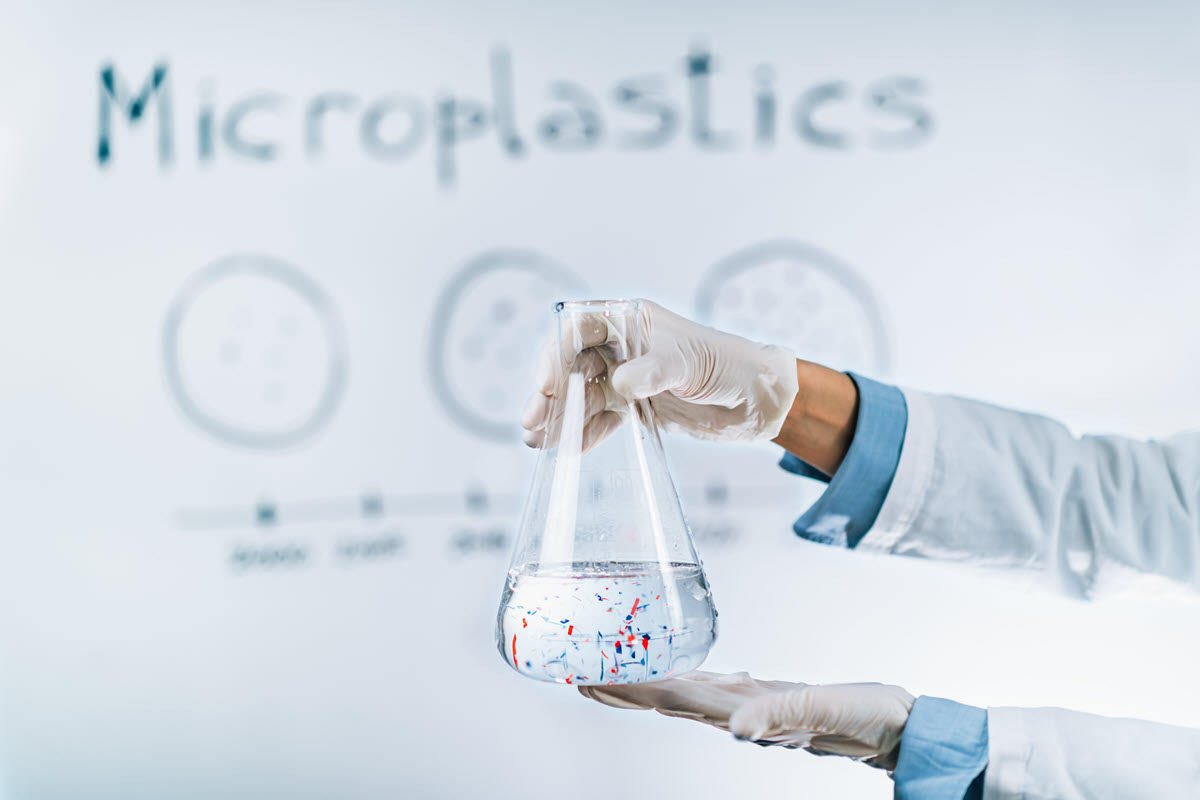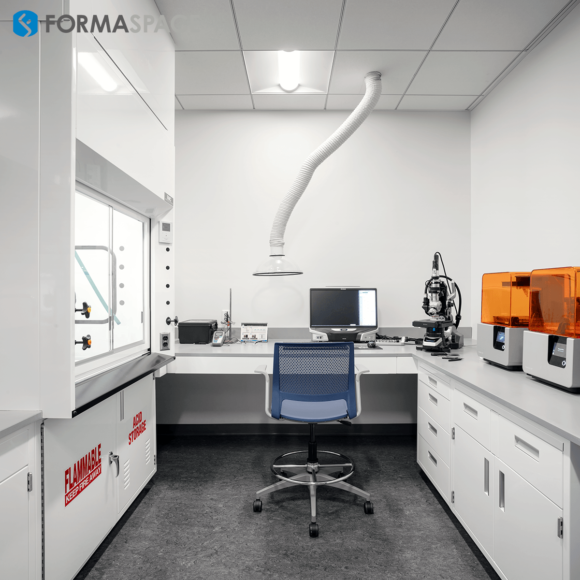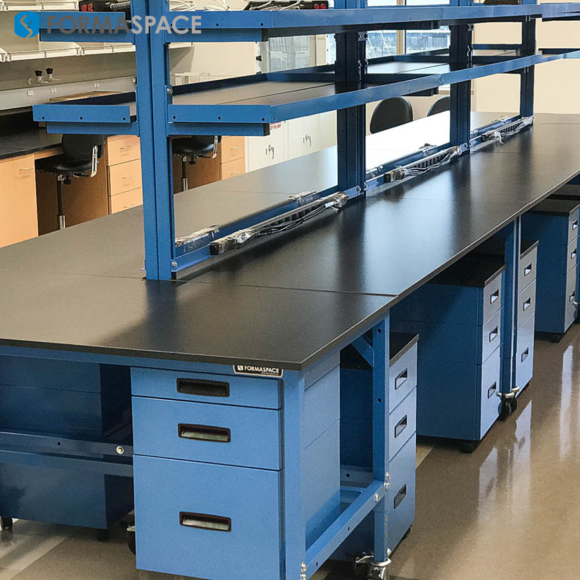I just want to say one word to you, just one word: Plastics.
— Mr. McGuire to Benjamin Braddock (Dustin Hoffman) in the 1967 film The Graduate.

In their 100-odd-year history, plastics have evolved from their humble roots as an explosive substitute for ivory billiard balls and inexpensive material for cheap and cheerful costume jewelry to an integral part of our daily life. We can even print plastic parts at home, thanks to consumer-grade 3D printers.
But there is a dark side to all this.
Plastic waste is proliferating, threatening the food chain and our human health. And it’s not limited to the plastic bottles littered on the side of the highway; plastics are also quietly disintegrating in places you might not expect, such as synthetic fabrics in your washing machine, producing microplastic particles that enter undetected into the waste stream.
The US is a top contributor to plastic waste, and single-use plastics (including wipes, plates, cups, tableware, packaging, and diapers) are a major source of plastics pollution. Unfortunately, during the pandemic, plastic waste increased dramatically (by as much as 8 million tons according to some estimates) as consumers, fearing Covid transmission, avoided sharing reusable items.
The problem is international in scope, with poorer countries often the recipient of plastics pollution discarded by richer nations. The United Nations is considering a new, legally binding treaty by 2024 to address the problem of plastics pollution globally.
And here in the US, the EPA published its own national recycling strategy in November 2021, calling for recycling 50% of municipal solid waste by 2030, funding in part by the infrastructure bill that included $350 million in grants for solid waste treatment and recycling.

But is placing the focus squarely on recycling plastics the right strategy? Probably not. Instead, laboratory researchers are calling for a more holistic approach that addresses the full circular lifecycle of plastics, including making plastics that degrade quickly on their own without the need for intervention.
The Great Pacific Garbage Patch, a Symbol of Failed Efforts to Control Plastics Pollution
The poster child for plastics pollution is the Great Pacific Garbage Patch.
Prevailing winds and ocean currents create spinning gyres that trap floating plastics in continent-sized fields that can be seen from space.
https://www.youtube.com/watch?v=-oAMqBiZNa0
Environmentalists, such as the young Dutch inventor Boyan Slat, founder of The Ocean Cleanup, have created innovative new technologies to pick up trash in the ocean, as well as rivers and harbors.
But plastic pollution just keeps coming. Plastics are impacting the most remote areas of the world.
There’s More Plastic in the Atmosphere and under the Ocean’s Surface than Meets the Eye
Out of sight, out of mind.
It’s easy to ignore the growing threat of microplastics pollution.
But it’s a real and growing problem.
For example, Roadways are a major source of microplastics, which then spread in the atmosphere. According to researcher Dr. Natalie M. Mahowald, vehicle tires shed small particles of rubber that can become airborne, traveling aloft for nearly a week.
Washing synthetic fabrics in a washing machine is another major source of microplastics pollution. This can be mitigated to a great extent by fitting specialty filters to prevent small plastic debris from entering the waste stream.
Industrial plastic pellets, called “nurdles,” are another chief source of microplastic pollution. These are shipped around the world to factories, where they are processed into plastic parts. Accidents at sea where containers full of nurdle pellets get dumped into the sea are as damaging to the environment as major oil spills.
New research techniques are making it easier to track the extent of microplastics pollution across the world’s waterways. Madeline Evans and Professor Christopher Ruf from the University of Michigan were recently recognized for their new method of interpreting “roughness” on the surface of water, enabling satellite-based radars to identify the presence of microplastic pollution.
Measurements of ocean microplastic concentration near major rivers, made by the #CYGNSS constellation of microsatellites, help identify their primary sources. Outflow from the Yangtze River into the East China Sea is imaged here. @NASAEarth #PI_Daily @TheOceanCleanup pic.twitter.com/vbJhFbMYVc
— Chris Ruf (@C_S_Ruf) September 26, 2021
But what happens under the surface of the water?
Here researchers are making some very disturbing discoveries.
It’s literally “raining” microplastics within the ocean depths
As microplastics disintegrate, they lose buoyancy and drift down to the ocean floor like rain.
Microplastics are Threatening Plant and Animal Life, including Humans. Can Ecosystems Adapt in Time Before it’s Too Late?
What is the impact of microplastic pollution on the environment?
Thanks to natural selection, ecosystems are responding. Scientists have identified new traits arising among some insects, allowing them to eat plastics.
Mealworms are also able to adapt to eating plastics as a food source, including potentially toxic additives found in polystyrene.
Other species are adapting to the Great Pacific Garbage Patch, forming “neopelagic communities” living on plastic trash floating on the surface of the water.

Laboratory Tests Confirm Microplastics Are Now Entering the Human Bloodstream
Given that marine life is mistaking microplastics for food, is it just a matter of time before plastics work their way up the food chain and find their way onto our dinner plates? Or is it happening already?
To answer this question, the Plastics and Human Health Center at the University of Queensland in Australia built a sophisticated “submarine” laboratory to isolate human test subjects to identify whether plastics (10 microns and below) have infiltrated our blood, urine, and brain tissues.
Meanwhile, a Dutch laboratory has just published a study that confirms the presence of plastic particle contamination in human blood, including PET plastics (commonly used in beverage containers) and polyethylene (used in disposable plastic trash bags).
But what are the health implications?
Some recent studies point to potentially serious problems caused by plastics entering the human body.
In a study published in the Journal of Hazardous Materials, researchers found that irregularly-shaped microplastics were associated with cell death, with Caco-2 cells (human adenocarcinoma cell line) being the most susceptible.
A 2010 study concluded that microplastics from the mother appear capable of crossing the placenta barrier; and a more recent study found the presence of microplastics in human placentas, possibly causing long-term damage to developing fetuses.
There are other health concerns. Some researchers are looking into whether microplastics might be a contributor to IBS (irritable bowel syndrome) or might cause us to gain weight.

New Methods to Recycle or Biodegrade Existing Plastic Pollution
What can be done to address the problem?
Companies such as Amazon are investing heavily in biodegradable plastics and plastic alternatives.
Meanwhile, many research teams are focused on making plastic materials that are more easily recycled.
At the University of California Berkeley, scientists Brett Helms and Corinne Scown have been developing a new type of plastic material called poly(diketoenamine) or PDK. They are seeking to create raw plastic based on microbe-fermented plant material (rather than one derived from fossil fuels) that will be able to be recycled and processed for reuse again and again.
Meanwhile, the French startup company Carbios is one of several companies seeking ways to recycle commonly used plastics, such as PET, using microbes and enzymes. The underlying technology relies on Ideonella sakaiensis bacteria, identified at Keio University and Kyoto Institute in Japan, which produces enzymes that allow it to “eat” the plastic.
Other groups researching ways to use enzyme-based plastics include the BOTTLE Consortium, a joint project of the U.S. Department of Energy’s (DOE’s) National Renewable Energy Laboratory (NREL) and the University of Portsmouth.

Advocates for these new processes argue that, in time, we could scale up recycling programs to help reduce plastic waste – even turning a profit by upcycling materials into higher-value materials.
Unfortunately, the poor performance of existing plastic recycling programs, which recycle a mere 10% of plastics currently, per the EPA (leaving nearly 80% buried in landfills), tells us that an approach that relies on active recycling programs may be a flawed strategy. Compounding the program is that many of these new biodegradable plastic recycling strategies require properly segregating used plastic materials so they can receive the correct corresponding process – a requirement that is likely impossible at industrial scales.
Research into Replacing Dangerous Plastics with Safer Alternatives
A much better approach would be to focus on creating plastic materials that biodegrade on their own without requiring any human intervention.
This, of course, is a reversal of the long-standing goal of material scientists who sought to make plastics as durable and long-lived as possible.
Here are some of the notable laboratory research projects underway that follow this new, short lifespan approach.
· Artificial Silk-based Plastics from Cambridge University / Xampla
Researchers from the University of Cambridge have created free-standing, nanostructured films made from plant proteins that mimic the high strength of spider silk. The product is being commercialized by the universities tech transfer office under the spin-out company Xampla.
· Plastic fibers made from Biodegradable Coffee Grounds or Hops Stems
Researchers at the Yokohama National University Graduate School of Engineering Science in Japan have identified two promising methods for creating cellulose nanofibers (CNFs) using agricultural waste. The first uses spent coffee grounds, and the second uses hop stems, which would otherwise be burned in the fields after harvest.
· Notpla brand Plant-based Packaging derived from Seaweed
The Notpla company is focused on manufacturing sachets, the small flexible packages holding a small amount of liquid condiments (such as ketchup or mayo), out of natural seaweed. Unlike conventional plastic sachets, Notpla sachets biodegrade over time without any human intervention.
· Time-based Biodegradable Plastics from UC Berkeley Research Labs
Earlier, we mentioned that enzymes can break down plastics. Berkeley professor of materials science and engineering and of chemistry Ting Xu is leveraging this process to create raw plastic materials that incorporate polyester-eating enzymes, allowing the plastic to degrade relatively quickly on its own, without the need to manage a recycling program.
· Mushroom Mycelium and Hemp Hurd-based Plastic Substitute for Packaging
Evocative Design is commercializing a plastic substitute made from a combination of Mushroom mycelium (e.g. the root structure) combined with hemp hurd (part of the stem of hemp plants). The result is a product that can be tuned to last for years (for use in building insulation, for example) or degrade quickly (in product packaging applications).
· Shrimp Shell-based Foam Substitute for Styrofoam
One of the great ironies for those who enjoy being on the water is that Styrofoam, widely used in products ranging from surfboards to floatation devices, is so difficult to recycle, creating a major source of plastic pollution. In response, UC Santa Barbara graduate John Felts created a new biodegradable material, known as Cruz Foam, that is based on seafood industry waste, such as shrimp shells.
· Sugar-based Polymer Materials
Two chemistry professors, Matthew Becker of Duke University and Andrew Dove of the University of Birmingham, have developed high-performance plastic materials based on sugar alcohols. Unlike similar plant-based materials derived from corn or sugarcane starch, these new sugar-based polymers biodegrade easily.
· Natural Microplastic Filters based on Okra and Aloe
Our final example is not a biodegradable plastic, but rather a natural plant-based material that can filter out microplastics from wastewater. This new research, led by principle investigator Rajani Srinivasan, Ph.D. of Tarleton State University (southwest of Fort Worth, Texas) was presented at the American Chemical Society (ACS) Spring 2022 meeting in San Diego.

Formaspace is Your Partner for Scientific Research and Discovery
If you are contemplating your next laboratory project, it’s time to give Formaspace a call.
If you can imagine it, we can build it, here at our factory headquarters in Austin, Texas.
Your Formspace Design Consultant is ready to help make your project a success.










